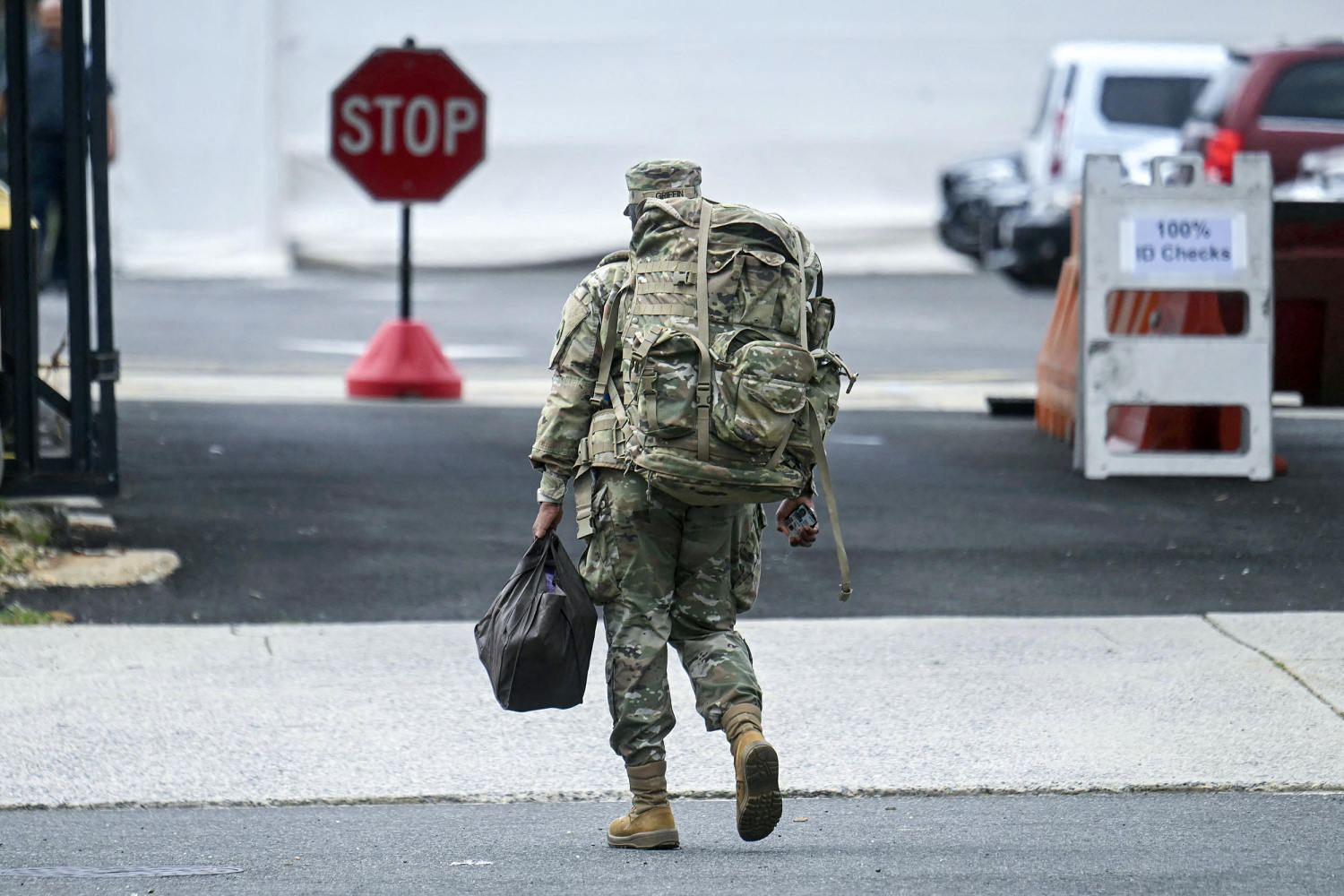
WASHINGTON — National Guard troops began arriving at the D.C. Armory on Tuesday morning to report for duty to carry out President Donald Trump’s directive to address crime in the nation’s capital.
The guardsmen, who entered the D.C. National Guard’s headquarters east of the U.S. Capitol dressed in their military uniforms, are part of a mobilization of about 800 soldiers that the Army activated Monday to assist with law enforcement.
While Trump’s memorandum said the mobilization would end once he determines that the “conditions of law and order have been restored in the District of Columbia,” the troops were notified they would be deployed until Sept. 25.
“Currently, the National Guard is being deployed to protect federal assets, provide a safe environment for law enforcement officers to make arrests, and deter violent crime with a visible law enforcement presence,” a White House official said Monday.
Standing alongside Trump as he announced his executive order, Defense Secretary Pete Hegseth said that people should expect to see the guardsmen “flowing into the streets of Washington in the coming week” and that they were prepared to bring in other specialized units.
Trump’s memorandum also directed Hegseth to coordinate with governors across the country and “authorize the orders of any additional members of the National Guard to active service, as he deems necessary and appropriate, to augment this mission.”
In an interview with NBC News, Greggory Pemberton, chairman of the D.C. Police Union, expressed support for the president’s moves, which included federalizing the Metropolitan Police Department. Pemberton said crime is still “ubiquitous” in the city, adding that while the president’s order could be potentially helpful in fighting crime, it would likely have only a temporary impact without making more far-reaching changes.
Pemberton said one of the main reasons local law enforcement “can’t get a handle on the crime” is because of a staffing shortage of more than 800 officer vacancies and because of laws the city council enacted “that really prevent us from being able to do our job and being able to hold criminals accountable.”
“As a short-term, stop-gap measure, if they want to give us 1,000 National Guardsmen and 500 federal agents to help us do our job, we’ll take it,” he said. “We’ll take anything we can to try to keep these criminals from victimizing citizens.”
Pemberton said he is concerned that if longer-term changes aren’t made, once federal agents and National Guard troops leave D.C., the Metropolitan Police Department “will be left holding the bag, which will only allow crime to again, you know, regain its foothold and start growing it again.”
The reactions from Washingtonians to Trump’s moves to take over the city were mixed. Denise Rucker-Krept, a Democrat and longtime resident of the D.C. neighborhood near where guardsmen are mobilizing, told NBC News Tuesday that she agrees with Trump that the city has a crime problem, but she also doubted a short-term surge in law enforcement and the military presence would provide a sufficient fix.
“I say that because you can tell people not to commit crimes, you can arrest them, but if you do not prosecute them, then nothing happens,” Rucker-Krept said. She added that the city council and the U.S. Attorney’s Office need to do more to prosecute those who commit crimes and hand down swift punishments that will serve as a deterrent — including holding young people, who she said are a major part of the problem, accountable.
Violent crime in the district has decreased by 26% over the last year, according to Metropolitan Police Department statistics, though crime overall has gone down by only 7% during that same period.
D.C. Mayor Muriel Bowser said Monday that the city was able to reverse a crime spike in 2023. “This year, crime isn’t just down from 2023, it’s also down from 2019 before the pandemic, and we’re at a 30-year violent crime low,” she said. But she added, “We’re not satisfied. We haven’t taken our foot off the gas, and we continue to look for ways to make our city safer.”
Bowser met Tuesday with Attorney General Pam Bondi, who is overseeing the effort, and several other top Justice Department officials. Also present at the meeting was DEA Administrator Terry Cole, whom Trump tapped to lead the police department.
Bondi called the meeeing “productive” in a post to X, adding that they agreed that the safety of residents and tourists in D.C. was a top priority.
Speaking to reporters after the meeting, Bowser said Trump’s takeover of the police department will not change the force’s organizational chart or “how we do business.”
She emphasized that the city wanted to ensure it was using the new resources, saying she was focused on “the federal surge and how to make the most of the additional officer support that we have.”
“How we got here, or what we think about the circumstances right now, we have more police, and we want to make sure we’re using them,” she said.
Jim Lardner, who was in D.C. on Tuesday protesting Trump’s actions, said he thinks Trump is trying to distract the public from other issues his administration is facing.
“The whole idea that there is some kind of a crisis of disorder in D.C. is a made-up phony story to distract attention from [a] deteriorating economy, from the ICE raids — which horrify even people who wanted action on immigration — and of course, from the Epstein files, it’s all a game of diversion,” said Lardner, who was holding a “Resist” sign a few blocks north of the White House, where homeless people sometimes set up encampments.
“I think this administration would like to take over, not only D.C., but any state or jurisdiction that doesn’t completely bend the knee,” he added.


